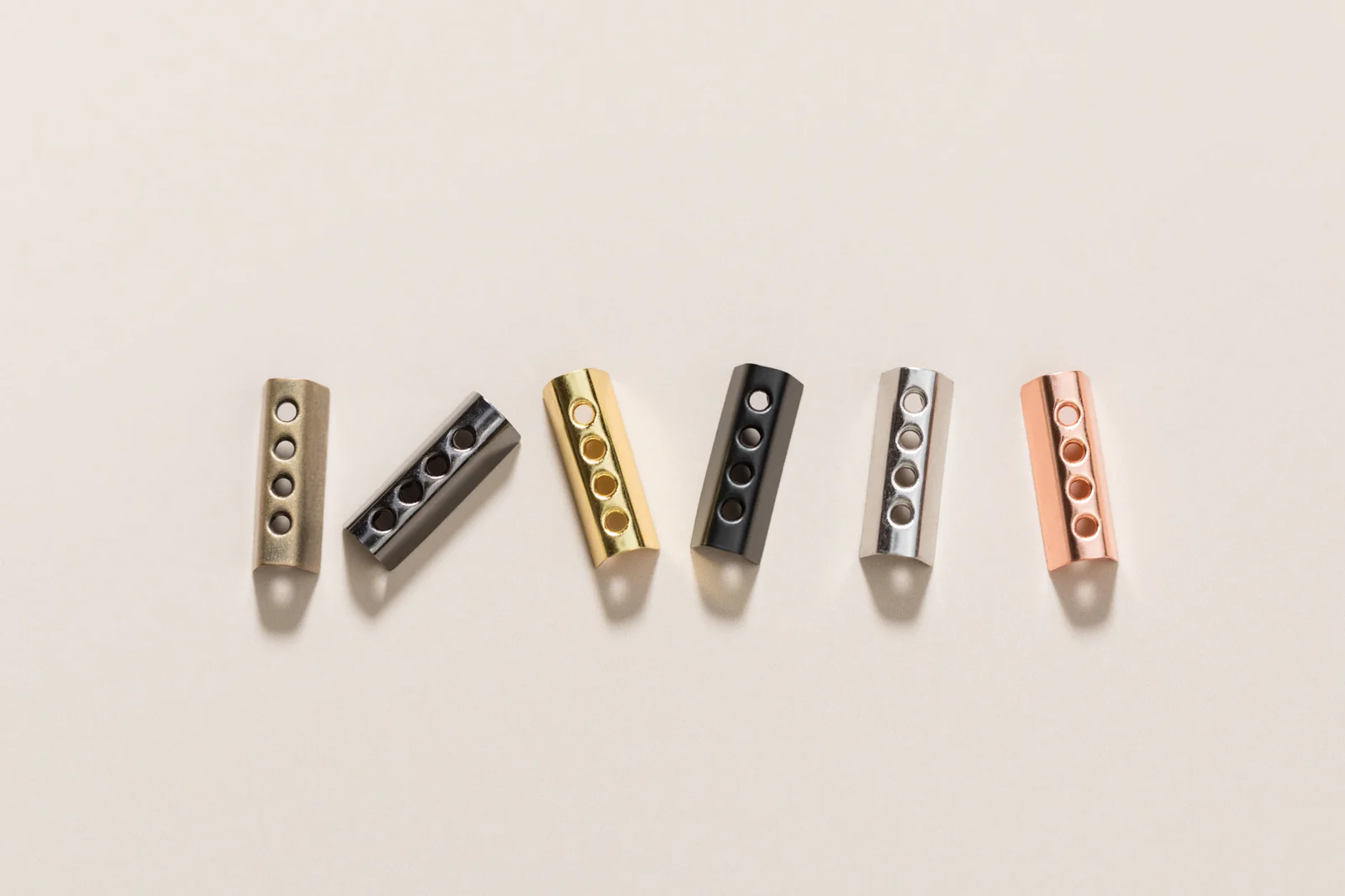The Importance and Varieties of Shoelace Aglets
Shoelaces are a fundamental part of our everyday footwear, providing comfort, support, and style. At the tip of each shoelace, you will find a small plastic or metal feature called an aglet. While seemingly insignificant, aglets play a crucial role in maintaining the integrity of shoelaces and ensuring hassle-free lacing. In this article, we will delve into the different types of aglets, their functions, and the significance of choosing the right aglet for your shoelaces.

The tip of a shoelace
1. Understanding Aglets
1.1 Definition and Purpose
An aglet, also known as a lace tag or lace end, is a small cylindrical or angular piece attached to the end of a shoelace. Its primary function is to prevent fraying and facilitate lacing through the eyelets of shoes.
1.2 History
Aglets have a rich history dating back centuries. Initially made from materials like bone, metal, or glass, they were ornamental and indicated social status. Over time, aglets evolved to focus more on functionality and durability.
2. Types of Aglets
2.1 Plastic Aglets
Plastic aglets are the most common variety found on shoelaces today. They are inexpensive, lightweight, and available in various colors. Plastic aglets are designed to withstand everyday wear and tear, making them ideal for casual and athletic shoes.
2.2 Metal Aglets
Metal aglets offer a sleek and sophisticated look, often seen on high-end dress shoes. They are typically made of brass, aluminum, or stainless steel. Metal aglets provide enhanced durability and can withstand frequent use without losing their shape.
2.3 Rope Aglets
Rope aglets are popular in outdoor and hiking footwear. They are made from tightly woven cords, providing excellent resistance to abrasion and moisture. Rope aglets ensure reliable lacing in rugged terrains and harsh weather conditions.
2.4 Custom Aglets
For those seeking a unique touch, custom aglets are the perfect choice. They can be personalized with initials, logos, or distinctive designs. Custom aglets add a touch of individuality to your shoelaces, making them a fashionable accessory.

Custom Shoelace Tips
3. Benefits of Choosing the Right Aglet
3.1 Prevents Fraying
One of the primary functions of aglets is to prevent shoelaces from fraying. By securely encasing the lace fibers, aglets ensure longevity and reduce the need for frequent lace replacements.
3.2 Facilitates Lacing
Aglets make it easier to thread shoelaces through eyelets, saving time and effort. With smooth aglets, the laces glide effortlessly, resulting in a more comfortable and efficient lacing experience.
3.3 Enhances Durability
Choosing the appropriate aglet material enhances the durability of your shoelaces. Metal aglets and rope aglets, in particular, are designed to withstand heavy usage and maintain their shape over time.
3.4 Adds Style and Personalization
Aglets can be a stylish addition to your footwear. They come in various colors, shapes, and designs, allowing you to express your personality and elevate your shoe's overall aesthetic.

Metal Aglets for Shoelaces
4. Care and Maintenance
4.1 Cleaning Aglets
To maintain the appearance and functionality of your aglets, it is essential to keep them clean. Regularly wiping them with a soft cloth or mild soap solution will help remove dirt and grime.
4.2 Replacing Aglets
In the event that an aglet becomes damaged or detached, it is possible to replace it. Replacement aglets can be found at shoe repair shops or purchased online. Follow the manufacturer's instructions or seek professional assistance for a seamless replacement.
Aglets may be small, but they play a significant role in the lifespan and usability of your shoelaces. From preventing fraying to enhancing style, the choice of aglet should not be overlooked. Consider the type of footwear, desired functionality, and personal preferences when selecting aglets. By doing so, you can ensure that your shoelaces remain intact, secure, and visually appealing for a long time to come.